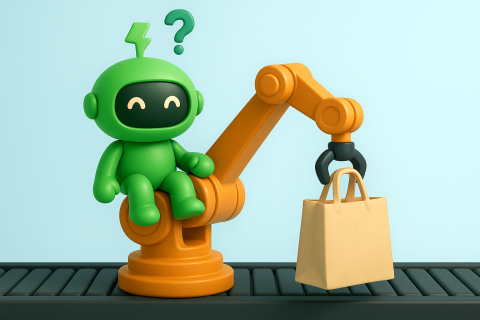
Running an online store means juggling dozens of small tasks, from tagging orders to emailing customers to managing inventory. As your store grows, those tasks pile up fast. That’s where ecommerce automation comes in.
Automation helps Shopify merchants save time, reduce mistakes, and stay focused on the work that actually grows the business. Let’s dig into what ecommerce automation is, what it can do for you, and how to start using it without having to write a single line of code.
What is ecommerce automation?
Ecommerce automation means using workflows, triggers, and tools to handle repetitive tasks automatically. Instead of tagging a VIP customer by hand or manually notifying your team about large orders, you set up rules to do it for you.
These workflows can respond to events, like an order being placed, a product going out of stock, or a customer hitting a spend threshold. They’re not just about marketing. Automation helps across fulfillment, team alerts, customer segmentation, and operations.
And because they run in the background, they don’t require you to remember or react. You set the logic once, and it works every time.
What kinds of tasks can be automated?
Ecommerce automation spans nearly every part of your store. Here are a few examples of what’s possible.
Order and fulfillment tasks
You can build workflows to tag large orders for special handling, alert your fulfillment team when certain SKUs are purchased, or send a reminder if an order hasn’t shipped within a set number of days. These automations keep orders moving without needing someone to monitor every transaction.
Customer management
It’s easy to lose track of how customers behave over time. With automation, you can tag first-time buyers, identify VIPs after a certain number of purchases, or trigger a loyalty email when a customer reaches a spend threshold. These workflows help you segment and personalize without digging through reports.
Product and inventory management
Workflows can also help clean up your catalog. You can automatically hide or tag sold-out products, update metafields when inventory drops to zero, or send an alert to your team or vendor when stock runs low. This keeps your product data accurate — and your operations ahead of the curve.
Marketing and communication
You can trigger follow-up emails, loyalty sequences, or even send data to your marketing platforms based on what customers buy. For example, you might start a winback campaign if someone hasn’t ordered in 60 days, or send an internal alert when a subscriber purchases for the first time.
Why ecommerce automation matters
Without automation, your team has to catch every detail manually. That means more work, more risk of error, and more delays when something slips through.
Automation frees you from chasing down low-value tasks. It ensures that VIPs get the right treatment, that fulfillment doesn’t miss edge cases, and that your team stays in sync even when orders spike. And because automation is consistent, it reduces the chance of things falling through the cracks.
It also helps you scale. Whether you’re doing 20 orders a day or 2,000, automated workflows don’t get overwhelmed. They just keep working.
How to start automating your store
The best place to start is with the tasks you repeat most often. That might be tagging customers, emailing your team, or pushing data into your CRM.
Shopify includes basic automation with Shopify Flow, a visual workflow builder that covers simple use cases like tagging or team notifications. But if you need more control, flexibility, or integration, you’ll want something like Arigato.
Arigato lets you trigger workflows from customer updates, metafield changes, order status, product inventory, and more. You can delay actions, run logic conditionally, and push updates across tools like Google Sheets, Slack, Trello, or email.
Not sure what to automate first? Arigato offers over 300 Shopify ecommerce automation templates to help you get started, covering everything from fulfillment workflows to loyalty segmentation.
What is ecommerce automation TL;DR
Ecommerce automation helps stores run smarter, not just faster. It turns repetitive tasks into reliable systems, saving time, preventing mistakes, and helping your team focus on growth.
You don’t need to build everything at once. Start with one workflow. Then another. With tools like Arigato Automation, you can create a store that keeps up with your business — without you doing it all by hand.